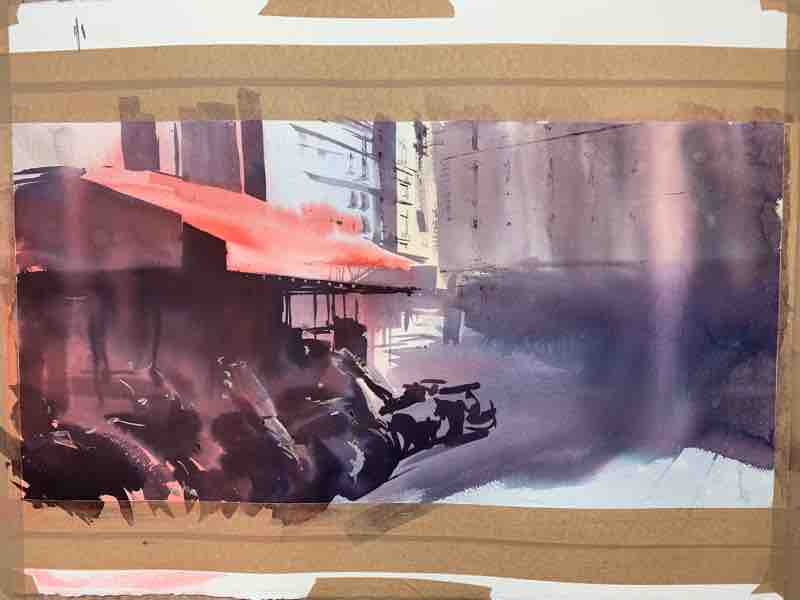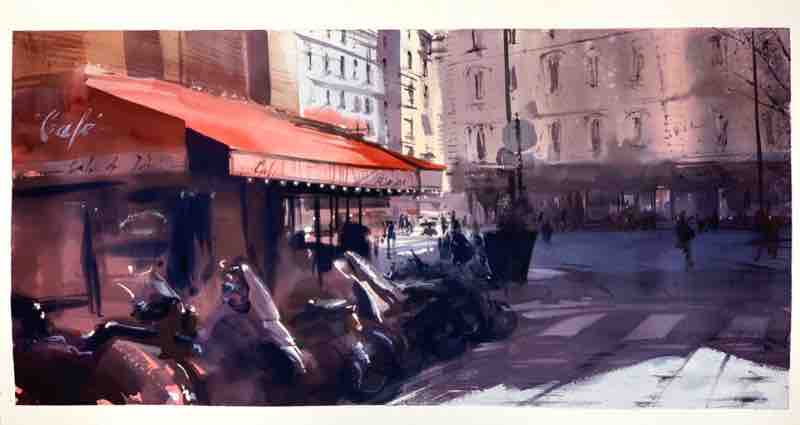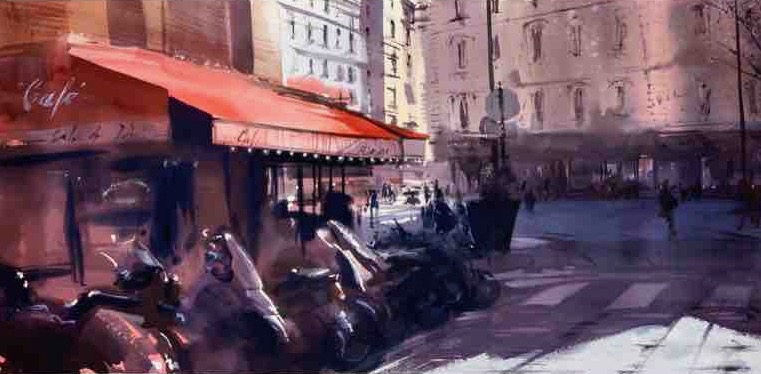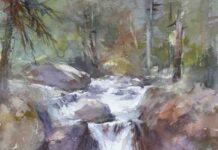Watercolor artist Alex Hillkurtz demonstrates his process step by step.

STEP 1
For this demo, Hillkurtz painted a café located down the street from where he lives in Paris. “One morning the light was hitting just right, and the scene had everything I love about cityscapes — incredible light and shadow, and activity,” he says. “There was a hint of the city just waking up.” The artist started with a graphite sketch, then put down washes of color with a big mop brush, letting the colors blend into each other. “I laid it down pretty quickly with a lot of water,” he explains. “I go in pretty strong, but the colors mellow out as they dry. I go for a lot of life and spontaneity in the underpainting so that everything I put on top of it builds on that excitement. As long as I build on it, then it stays energetic.” He put a bit of masking fluid down so that the highlights on the scooter windshields would pop.

STEP 2
Contrary to most watercolor steps, and even to Hillkurtz’s own typical working method, the artist painted the dark area in shadow under the café awning early on using black paint and ink over the initial warm wash. “I knew that this image had high contrast where the scooters were and in the dark of the café, so I wanted to carve that in pretty early,” he says. “Shadows may be cool, but I wanted that warm glow underneath. I was looking to build in contrast and make sure the foreground café was really bold.”

STEP 3
Hillkurtz began to add detail, but loosely. Those calligraphic dark shapes in the middle of the painting suggest the round wheels, exhaust pipes, or seats of scooters — without actually describing them. “I want to express something, but I don’t want to describe it literally,” he says. “I believe a painting is a dialogue between the viewer and the painting, so I suggest ideas and let the viewer fill them in. Sometimes all I need is an expressive brushstroke or mark to indicate reflections in a glass window or scooters at the curb.” His goal is to describe a busy scene without being busy.

STEP 4
In the last stage, Hillkurtz darkened the shadows in the street, cutting around the shape of the crosswalk stripes. Simply by darkening the shadow around the stripes, he made the zebra crossing read brighter. He then used a bit of white gouache to add highlights, such as the name of the café and the hanging lights. The overall feel is loose, yet accurate.

Paint along with Alvaro Castagnet, Thomas Schaller, Xi Guo, and other top watercolor artists from around the globe at the next Watercolor Live online event, January 22-24, 2025, with an optional Essential Techniques Day on January 21.







